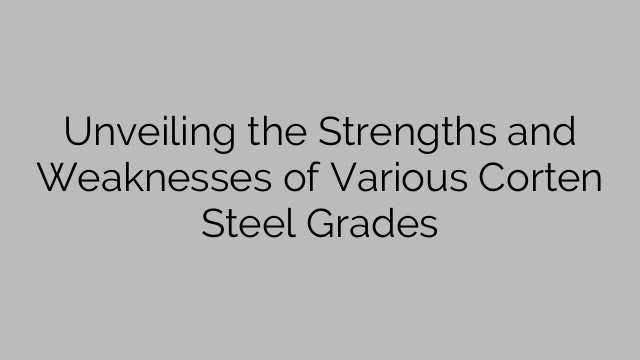1. Corten A:
Corten A is the most common type of weathering steel, often used in outdoor sculptures, facades, and construction projects. It exhibits a higher corrosion resistance compared to standard carbon steel due to the addition of copper, chromium, and phosphorus. The characteristic rust-colored patina forms when exposed to atmospheric conditions, providing both protection and a visually appealing appearance. However, Corten A is not recommended for marine environments or areas with high levels of humidity, as it may experience accelerated corrosion.
2. Corten B:
Corten B is similar to Corten A in terms of its chemical composition but offers better resistance to atmospheric corrosion. It is widely used in structural applications, such as bridges, industrial buildings, and transmission towers. While Corten B demonstrates enhanced durability, it may still experience corrosion in marine environments or regions with highly acidic or alkaline conditions.
3. Corten C:
Corten C is a variant of Corten B, offering increased resistance to atmospheric corrosion. It is commonly utilized in applications requiring extended longevity, such as shipping containers, silos, and railway wagons. The addition of alloying elements, including nickel and chromium, improves the material’s ability to withstand harsh environments. However, like other Corten steel grades, Corten C is susceptible to corrosion in marine or high humidity settings.
4. Corten steel for welding:
Corten steel grades suitable for welding, such as Corten A588, are primarily used in structural applications exposed to external forces. These grades have improved tensile strength, making them ideal for load-bearing structures like bridges and buildings. However, welding Corten steel involves specific techniques and precautions to prevent weld zone corrosion. It is crucial to follow proper welding practices and employ adequate protective measures.
5. Corten steel for landscaping and garden design:
Corten steel is a popular choice for outdoor design projects, including landscaping and garden features. ASTM A847, commonly referred to as Corten Tube or Pipe, is frequently used in such applications. Its unique hollow structural sections offer artistic possibilities, allowing designers to create custom and intricate designs. However, like other Corten steel grades, robust maintenance practices are essential in order to prevent any unwanted corrosion.
In conclusion, Corten steel grades possess distinct qualities that cater to various applications. While Corten A is commonly used in architectural contexts, Corten B and C provide improved resistance to atmospheric corrosion. Welding grades like Corten A588 offer enhanced tensile strength, while specific varieties like ASTM A847 are well-suited for landscaping and garden projects. Understanding the strengths and weaknesses of these Corten steel grades is crucial in selecting the right material for your specific needs. Proper maintenance and environmental considerations are essential to maximize the longevity and beauty of Corten steel.
[ad_2]

